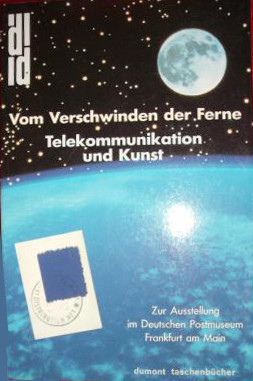Friedrich Kittler: Optical Media: Berlin Lectures 1999 (2002–)
Filed under book | Tags: · art, art history, computer art, computing, film, film history, history of photography, image, media archeology, painting, philosophy, photography, technology

“This major new book provides a concise history of optical media from Renaissance linear perspective to late twentieth-century computer graphics. Kittler begins by looking at European painting since the Renaissance in order to discern the principles according to which modern optical perception was organized. He also discusses the development of various mechanical devices, such as the camera obscura and the laterna magica, which were closely connected to the printing press and which played a pivotal role in the media war between the Reformation and the Counter-Reformation.
After examining this history, Kittler then addresses the ways in which images were first stored and made to move, through the development of photography and film. He discusses the competitive relationship between photography and painting as well as between film and theater, as innovations like the Baroque proscenium or “picture-frame” stage evolved from elements that would later constitute cinema. The central question, however, is the impact of film on the ancient monopoly of writing, as it not only provoked new forms of competition for novelists but also fundamentally altered the status of books. In the final section, Kittler examines the development of electrical telecommunications and electronic image processing from television to computer simulations.
In short, this book provides a comprehensive introduction to the history of image production that is indispensable for anyone wishing to understand the prevailing audiovisual conditions of contemporary culture.”
Publisher Merve, Berlin, 2002
Internationaler Merve Diskurs series, 250
ISBN 3883961833, 9783883961835
331 pages
English edition
Translated by Anthony Enns
With an introduction by John Durham Peters
Publisher Polity, 2009
ISBN 0745640915, 9780745640914
vi+250 pages
Reviews: Anthony Enns (Electronic Book Review 2004), Nicholas Gane and Hannes Hansen-Magnusson (Theory Culture Society 2006), Kiss (2006, HU), Bohár (HU), Jussi Parikka (2011).
Publisher (DE)
Publisher (EN)
Worldcat (DE)
Worldcat (EN)
Optische Medien. Berliner Vorlesung 1999 (German, 2002, added on 2016-8-13, removed on 2017-8-10 upon request from publisher – read first two chapters)
Optical Media: Berlin Lectures 1999 (English, trans. Anthony Enns, 2009)
Sven Spieker: The Big Archive: Art from Bureaucracy (2008)
Filed under book | Tags: · archive, archiving, art, art history, bureaucracy, database, memory, museum, photography, surrealism

“The typewriter, the card index, and the filing cabinet: these are technologies and modalities of the archive. To the bureaucrat, archives contain little more than garbage, paperwork no longer needed; to the historian, on the other hand, the archive’s content stands as a quasi-objective correlative of the “living” past. Twentieth-century art made use of the archive in a variety of ways—from what Spieker calls Marcel Duchamp’s “anemic archive” of readymades and El Lissitzky’s Demonstration Rooms to the compilations of photographs made by such postwar artists as Susan Hiller and Gerhard Richter. In The Big Archive, Sven Spieker investigates the archive—as both bureaucratic institution and index of evolving attitudes toward contingent time in science and art—and finds it to be a crucible of twentieth-century modernism.
Dadaists, constructivists, and Surrealists favored discontinuous, nonlinear archives that resisted hermeneutic reading and ordered presentation. Spieker argues that the use of archives by such contemporary artists as Hiller, Richter, Hans-Peter Feldmann, Walid Raad, and Boris Mikhailov responds to and continues this attack on the nineteenth-century archive and its objectification of the historical process.
Spieker considers archivally driven art in relation to changing media technologies—the typewriter, the telephone, the telegraph, film. And he connects the archive to a particularly modern visuality, showing that the avant-garde used the archive as something of a laboratory for experimental inquiries into the nature of vision and its relation to time. The Big Archive offers us the first critical monograph on an overarching motif in twentieth-century art.”
Publisher MIT Press, 2008
Art: Cultural Studies series
ISBN 0262195704, 9780262195706
219 pages
Reviews: Sas Mays (caa.reviews 2009), Andrew J. Lau (InterActions 2009).
PDF, PDF (updated on 2017-4-22)
Comments (2)Edith Decker, Peter Weibel (eds.): Vom Verschwinden der Ferne: Telekommunikation und Kunst (1990) [German]
Filed under book | Tags: · art, art history, electricity, photography, suprematism, telegraphy, telematics, television

Published on the occasion of an exhibition held at Deutsches Postmuseum, Frankfurt am Main, from 2 October 1990 until 13 January 1991.
Publisher DuMont Buchverlag, Cologne, 1990
Volume 257 of DuMont Taschenbücher
ISBN 3770127250, 9783770127252
359 pages

